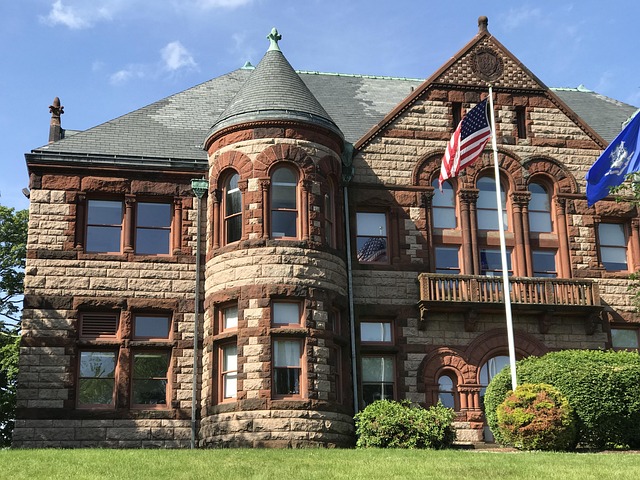Oregon's child welfare system is governed by robust laws and policies, primarily managed by the Department of Human Services (DHS). This approach includes collaboration with local communities, tribes, and agencies to preserve families while ensuring child safety. Reporting child abuse or neglect is crucial, with legal obligations for healthcare professionals, educators, and the public. Removal and placement procedures follow strict guidelines, balancing protection with family rights. Dependency cases lead to potential parental rights termination for the child's best interest. Oregon offers a strong adoption framework with support services, and foster care policies emphasize safety, permanency, and family reunification.
Oregon’s child welfare system, governed by a comprehensive set of laws, is designed to ensure the safety and well-being of children. This overview delves into key aspects of Oregon child welfare policies, including jurisdiction and authority, reporting requirements, removal procedures, dependency determinations, adoptive processes, and legal protections for foster care residents. Understanding these policies is crucial for parents, guardians, and anyone involved with Oregon’s child welfare system.
- Jurisdiction and Authority: Understanding Oregon's Child Welfare System
- Reporting Requirements: When and How to Notify Authorities
- Removal and Placement: Procedures and Rights of Parents/Guardians
- Dependency and Termination of Parental Rights
- Adoptive Processes and Resources in Oregon
- Legal Protections and Support for Children in Foster Care
Jurisdiction and Authority: Understanding Oregon's Child Welfare System

Oregon’s child welfare system is governed by a robust set of laws and policies designed to protect and nurture at-risk youth. The state’s Department of Human Services (DHS) holds the primary jurisdiction and authority over child welfare matters, overseeing services that range from family support and prevention programs to out-of-home care and adoption. This comprehensive approach ensures that children in need receive the necessary resources and interventions while also holding families and caregivers accountable for their well-being.
The DHS’s Child Welfare Division works collaboratively with local communities, tribes, and other agencies to implement child welfare policies Oregon has established. This includes responding to reports of abuse or neglect, conducting investigations, and making informed decisions regarding a child’s placement and safety. The division prioritizes family preservation and reunification whenever possible, while also recognizing the need for alternative arrangements when immediate removal is in the child’s best interest.
Reporting Requirements: When and How to Notify Authorities

In Oregon, the reporting of child abuse and neglect is a critical aspect of upholding child welfare policies. Anyone who has knowledge or reasonable cause to suspect that a child is suffering abuse or neglect is legally required to report it. This includes healthcare professionals, educators, and members of the public. The process typically involves contacting the local Child Protective Services (CPS) agency.
Reports should be made as soon as possible when there is reason to believe a child is at risk. Key pieces of information to include in the notification are details about the suspected abuse or neglect, the child’s age and location, the names of any involved parties, and any evidence or observations that support the report. It’s important for individuals with knowledge of potential child welfare issues to stay informed about Oregon’s child welfare policies to ensure timely and appropriate action is taken to protect at-risk children.
Removal and Placement: Procedures and Rights of Parents/Guardians

In Oregon, removal and placement procedures within child welfare systems are governed by a set of strict yet protective policies. When child welfare authorities intervene, they prioritize the safety and well-being of the child. If a child is deemed at risk in their current living environment, removal from the home may be necessary. This process involves a comprehensive assessment to determine the most suitable placement options, considering factors like family dynamics, the child’s needs, and available resources.
Parents or guardians have legal rights during this phase. They are entitled to be informed of the reasons for the removal, provided with documentation outlining the case plan, and offered opportunities to participate in decision-making. Oregon’s child welfare policies ensure a fair process, aiming to balance the protection of vulnerable children with the rights of their families.
Dependency and Termination of Parental Rights

In Oregon, dependency cases are initiated when a child is found to be in need of care and protection due to abuse or neglect. The state’s child welfare policies aim to provide services and support to families, but if efforts to rehabilitate the parental situation fail, termination of parental rights may become necessary. This process is a last resort, designed to protect the best interests of the child.
Oregon has established clear guidelines for terminating parental rights, focusing on the child’s safety and well-being. The court considers factors such as past and current parenting practices, the ability to meet the child’s needs, and the potential long-term effects on the child. If a judge determines that it is in the child’s best interest, parental rights can be terminated, paving the way for adoption or permanent custody placement with a suitable alternative caregiver.
Adoptive Processes and Resources in Oregon

Oregon has a robust framework for adoptive processes, designed to ensure the well-being and smooth transition of children into their new families while adhering to state child welfare policies. The process begins with individuals or couples completing an adoption application through the Oregon Department of Human Services (DHS). Once approved, prospective parents can either work with licensed adoption agencies or opt for an independent adoption, both of which are supported by the DHS.
The state offers a range of resources to support adoptive families, including financial assistance programs and post-adoption services. These initiatives aim to foster stability and well-being for both adopted children and their parents. Oregon’s commitment to effective child welfare policies is evident in its comprehensive approach, ensuring that adoptive processes are not just legal procedures but also nurturing environments where children can thrive.
Legal Protections and Support for Children in Foster Care

In Oregon, child welfare laws are designed to provide legal protections and support for children in foster care, ensuring their safety, well-being, and access to essential services. The state’s child welfare policies prioritize the best interests of the child, focusing on permanency, family reunification, and alternative care options when necessary. Oregon Department of Human Services (DHS) plays a pivotal role in implementing these policies, overseeing foster care placements, and coordinating with various agencies to meet the unique needs of each child.
Children in foster care are entitled to a range of legal protections, including regular review of their cases, access to educational services, healthcare coverage, and opportunities for therapeutic support. Oregon’s foster care system also emphasizes the importance of maintaining connections with biological families whenever possible, through case management, family visits, and other interventions aimed at facilitating reunification or establishing permanent guardianship. These comprehensive child welfare policies reflect Oregon’s commitment to supporting vulnerable children and ensuring they receive the necessary resources to thrive.






